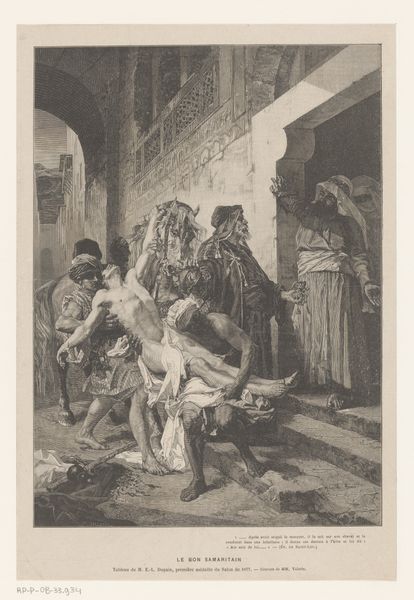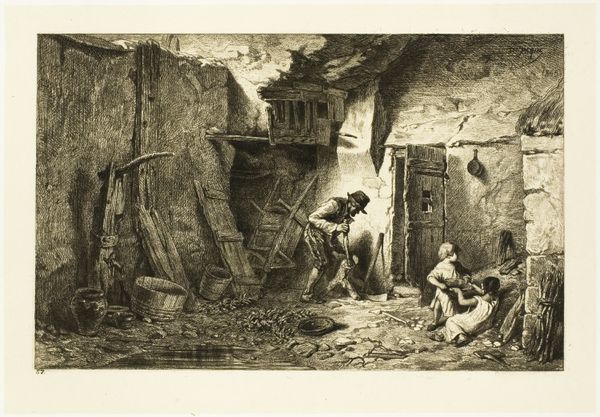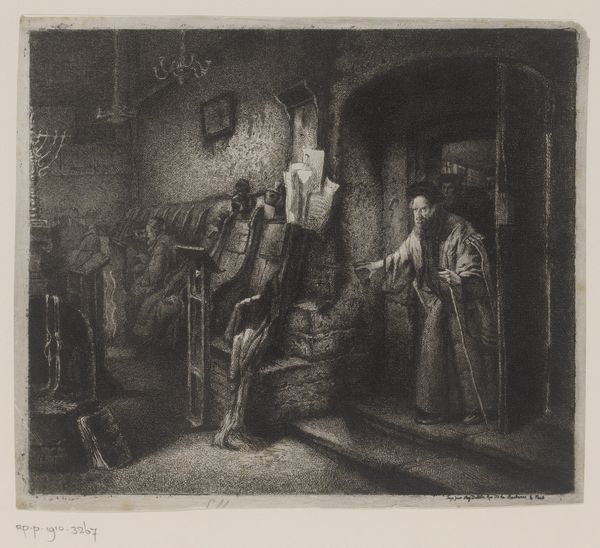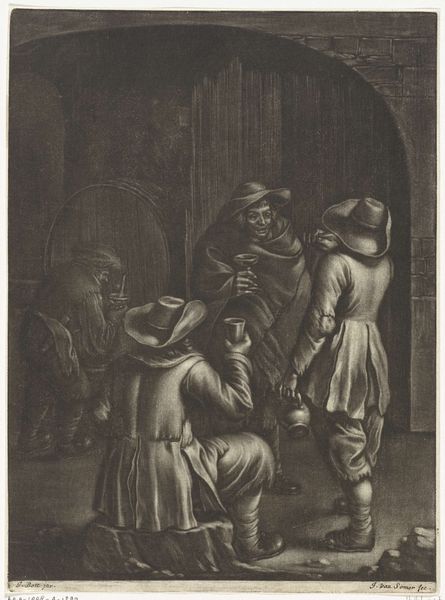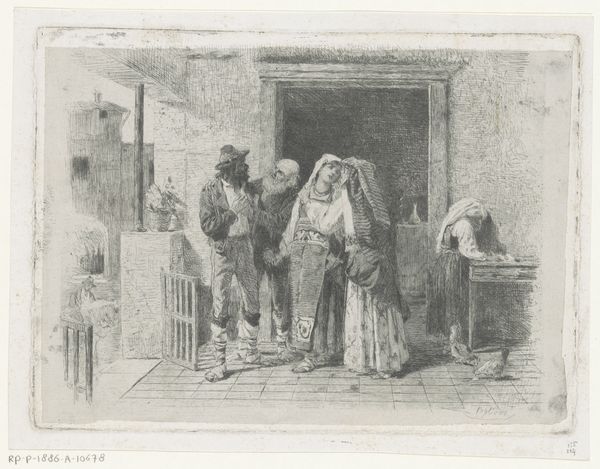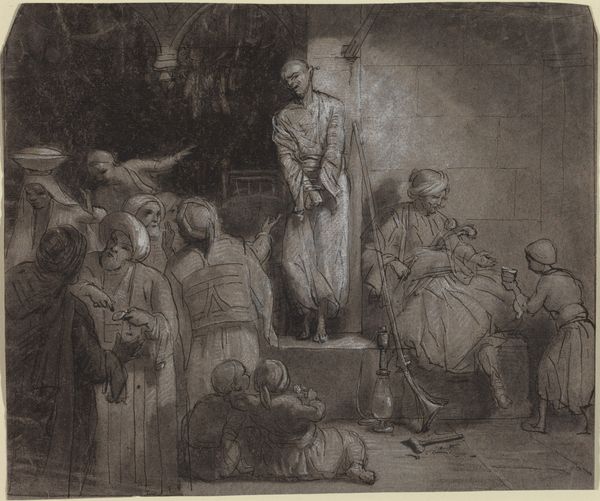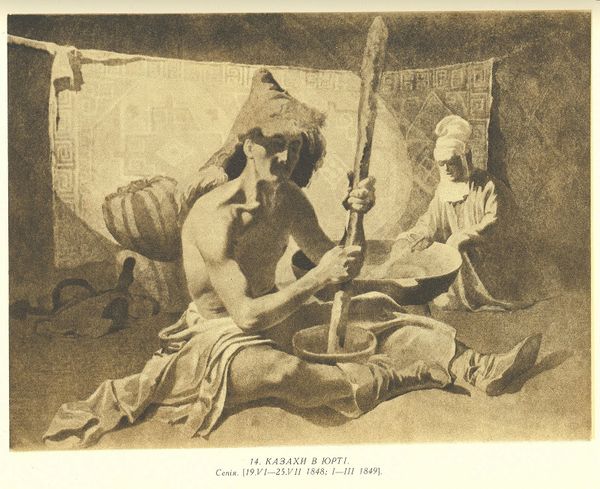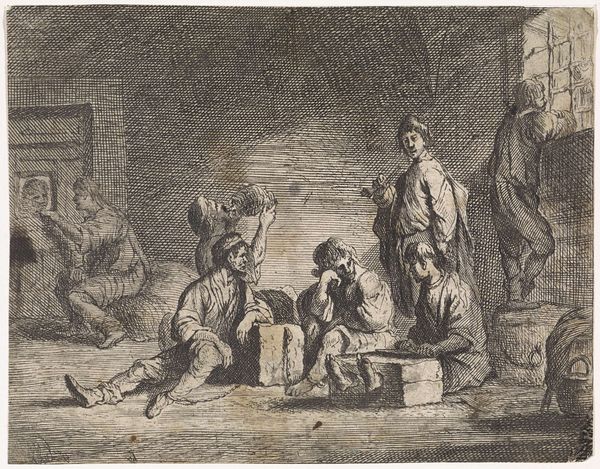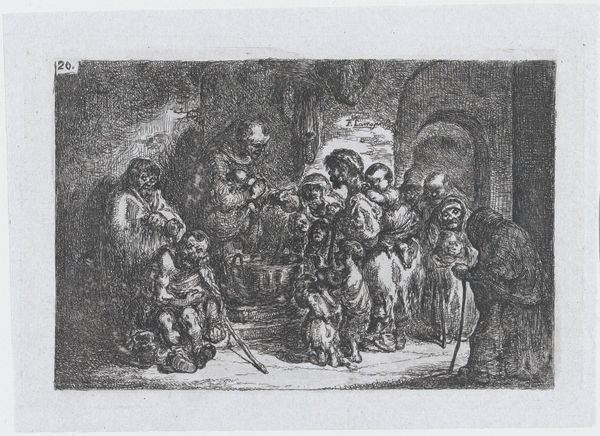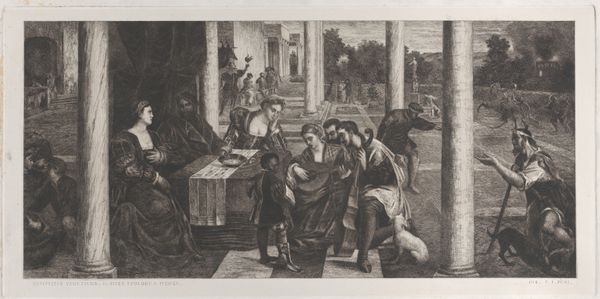
drawing, print, engraving
#
portrait
#
drawing
# print
#
pencil sketch
#
charcoal drawing
#
pencil drawing
#
romanticism
#
genre-painting
#
history-painting
#
engraving
#
realism
Copyright: National Gallery of Art: CC0 1.0
Curator: This is "Artist Drawing a Man in Turkish Dress," an engraving created in 1819 by Pierre Nolasque Bergeret. It's rendered in black and white. Editor: It immediately strikes me as a study in contrasts, the very fine detail work highlighting the broad areas of shadow. The artist's skill with line is exceptional. Curator: Indeed. The work presents a layered depiction of artistic production and cultural exchange. The central figure in Turkish dress situates the scene within a fascination with the Orient prevalent during the Romantic period. How do you see the figure of the artist fitting into this context? Editor: The artist, positioned with his back to us, anchors the composition. Note the deliberate juxtaposition of the tools of creation—the charcoal, the engraving plate—against the exoticized subject matter. The composition directs our eye to this dialectic. Curator: Exactly. The "Turkish Dress" is not simply ethnographic documentation; it is a performance of identity, a construction mediated by the artist's gaze and the patron's expectations. This highlights the power dynamics inherent in representation, raising questions about authenticity, and the orientalist construction of identity in the early 19th century. The power to create and the position from which an artist makes these decisions. Editor: Semiotically, each object—the turban, the musical instrument, the very textures achieved by Bergeret's engraving technique— functions as a signifier within a larger cultural narrative. Observe the complex interplay of light and shadow. The depth this adds is incredible. Curator: Yes, but that technique is working in concert with a clear commentary on cultural appropriation and representation. We should not isolate them, or flatten their inherent relationship and relevance. What stories are left out or glossed over for the ease of artistic process? What power is exerted over a subject during that process? Editor: I agree. The brilliance of Bergeret's technical execution invites us to consider these aspects in order to unlock greater meanings behind its initial impression. Curator: Reflecting on this work reminds us how crucial it is to view art through a critical lens that considers historical context. Editor: Absolutely. And by understanding its formal properties we can see how deeply they shape that context, creating meaning through structure and visual cues.
Comments
No comments
Be the first to comment and join the conversation on the ultimate creative platform.
